The Mystery Temple, A Famed Indian Mosque and the Debate that Won’t End
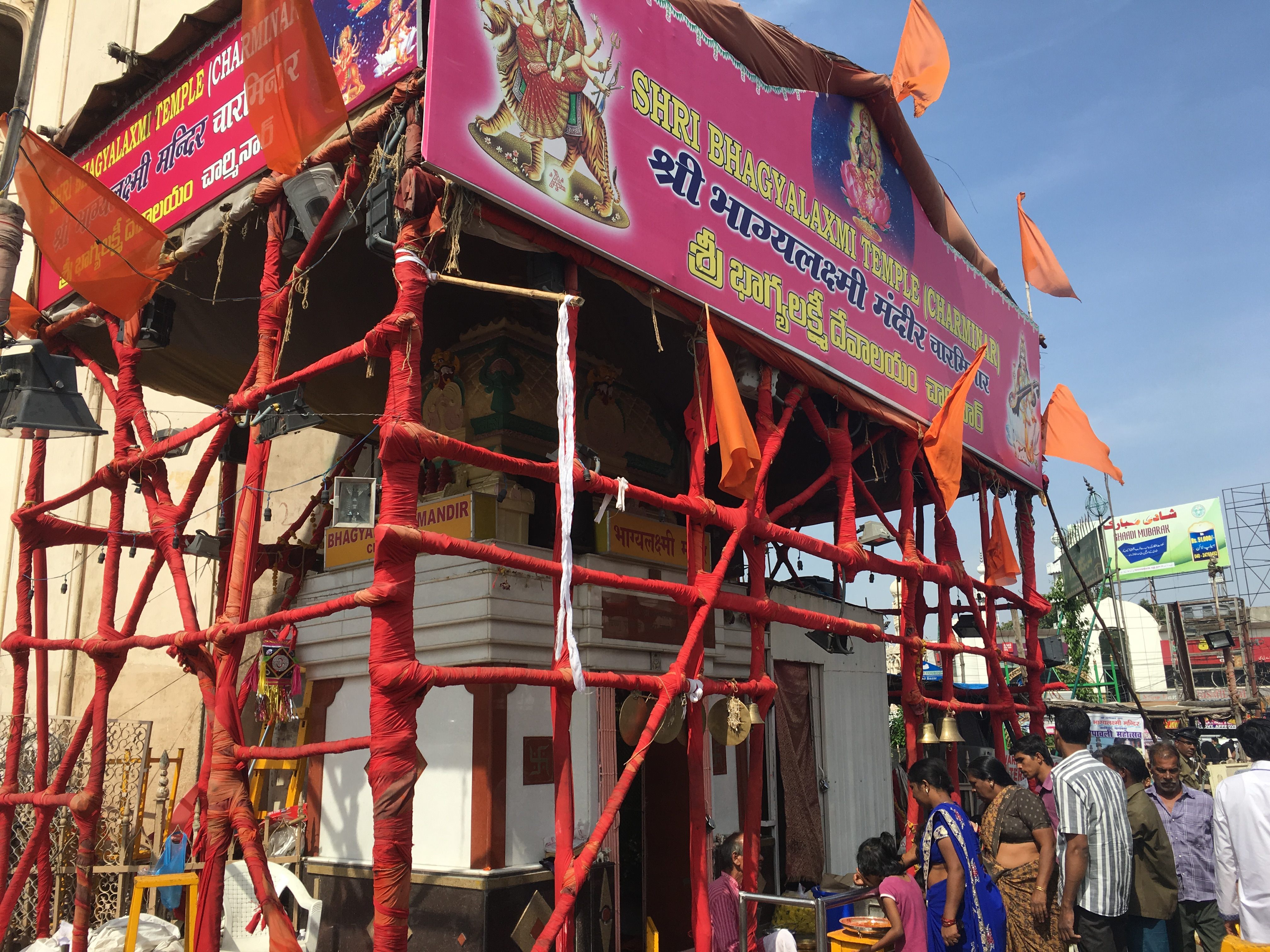
The Bhagyalakshmi Temple sits at the foot of Charminar, a longtime symbol of the Hindus and Muslims here sharing the streets together. No one knows how old Bhagyalakshmi Temple actually is, or how it got there in the first place. And the debate continues today. (All Photos: Mary Pilon)
The Bhagyalakshmi Temple could easily be overlooked by the millions of tourists who have visited Charminar mosque, one of Hyderabad’s—and India’s—most sacred historical sites.
A small, brightly colored booth resting at the base of the palatial mosque, the temple, like the mosque, draws thousands of visitors—Hindus, Muslims, Christians and other wayward visitors, alike—a day. An active place of worship, it is nestled on streets that have been shared by Hindus and Muslims for centuries, a living symbol of the longtime intersection of the groups here. (Roughly 40 percent of Hyderabad is Muslim and 60 percent Hindu, compared with 15 percent Muslim and 85 percent for India, overall.)

It certainly looks old, if not as ancient as the mosque, which dates back to the 14th century. But actual age (and with it, history) of the Bhagyalakshmi Temple is a mystery. No one knows how it got there, which sometimes leads to impassioned debate on the streets surrounding it. It’s a striking collision: two major religions sharing space, with the actual history of the sacred sites unknown.
“There’s still a lot of controversy about it,” Bappa Majumdar, the Hyderabad bureau chief of the Times of India said, adding that readers still send him photos trying to support their various claims to the temple’s history. “So far, nothing major has happened there, but there’s religious tension there.”
The temple and the mosque sit in the cacophonous center of this 6.8 million-person city, a labyrinth of antiquated buildings that now double as cell phone accessory shops, a collection of fruit vendors, women walking around in burkas and saris, dust kicked up by the perpetual whirr of mopeds and tuk-tuks. Here, one can haggle over the price of saris and burkas, hear songs in Arabic and Hindi (or Urdu or Telugu), read the Koran or the Vedas.
In 2012, a Hindu paper printed photographs alleging that the Bhagyalakshmi Temple did not exist in 1957 or 1962, but it was there in 1986, 1990 and 1994. One line of thinking is that the temple originated sometime in the late ‘60s, but others think that it is as old as Charminar itself, which was built in 1591, a mere 350 year margin of error. Others argued that the photographs are doctored. Another theory claims that Hyderabad’s founder, Muhammad Quli Qutb Shah, laid the stones himself, as a nod to the Hindu-Muslim makeup of the city’s early populous.

An article in newspaper The Hindu from 2012 about the controversy. (Photo: Courtesy The Hindu)
The photo release was precipitated by some protests that turned violent after city workers attempted to put a temporary cover over Charminar. According to The Hindu newspaper, cars were lit on fire and people attacked as the Majlis-e-Ittehadul Muslimeen (MIM), a political party, led the charge against the temple. The anger wasn’t just over the temple, which many saw as an authorized structure attached to ancient sacred site. Like many fights, there was a larger issue at stake. The newspaper put it thusly:
“The fight in the name of Charminar is not a warning flare about the condition of just one heritage structure. It is a reflection of persisting state apathy, dismal performance of institutions that manage the city’s heritage and the misuse of history for political gains.”
On a recent November afternoon, a security guard stationed outside of the temple explained that its first stone was laid concurrent with that of Charminar mosque in the 1590s. A stream of people were lined up as he spoke, taking their shoes off and traversing the hot asphalt to seek a blessing. Others slowed down mopeds on the roundabout and clasp their hands in prayer from the traffic circle, a spiritual pit stop. He told a tale of a Hindu women given a goat for sacrifice and that she refused to leave her spot. According to the guard, when Indira Gandhi went into office as India’s prime minister in 1980, the temple expanded.
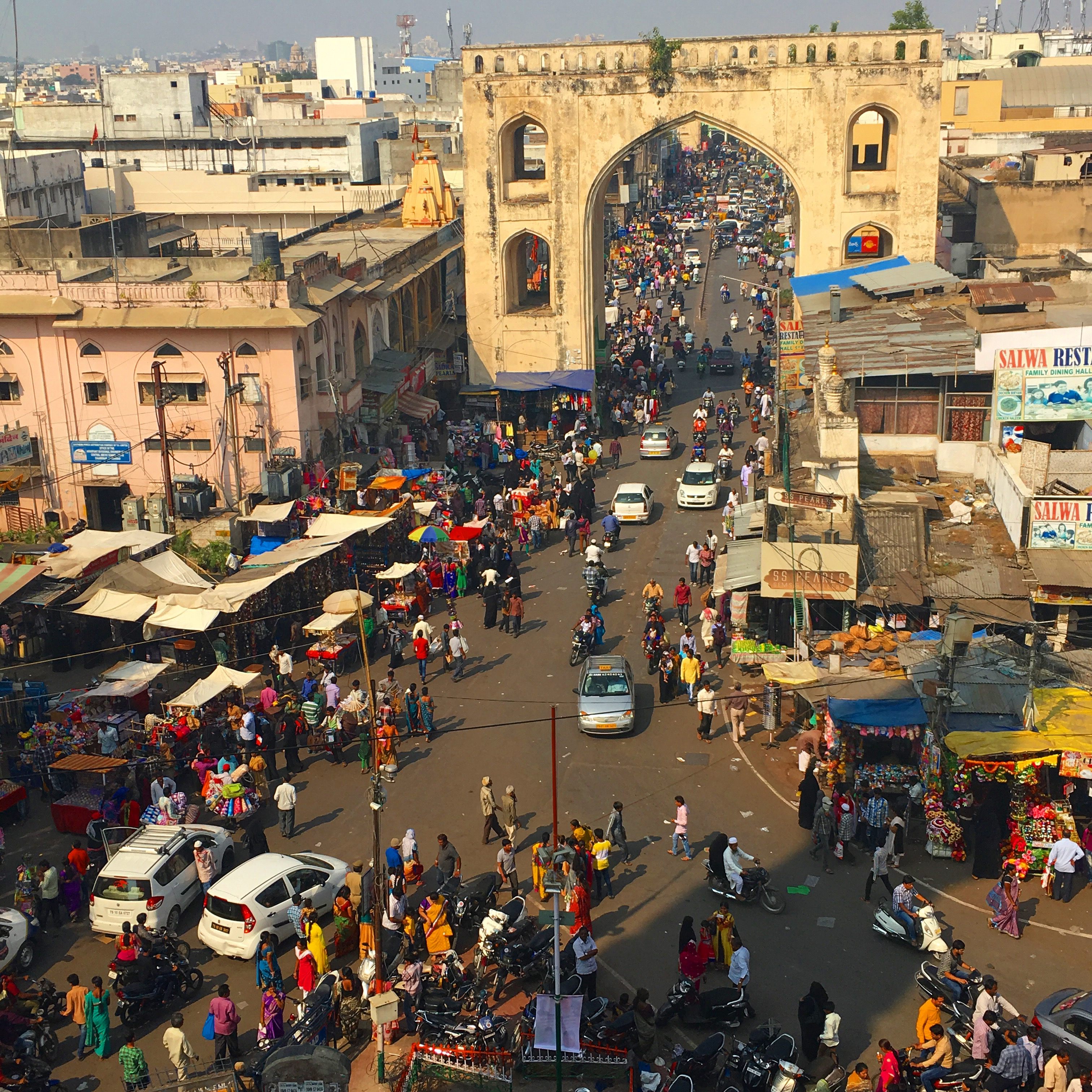
The streets of Old Hyderabad, as seen from the top of Charminar mosque.
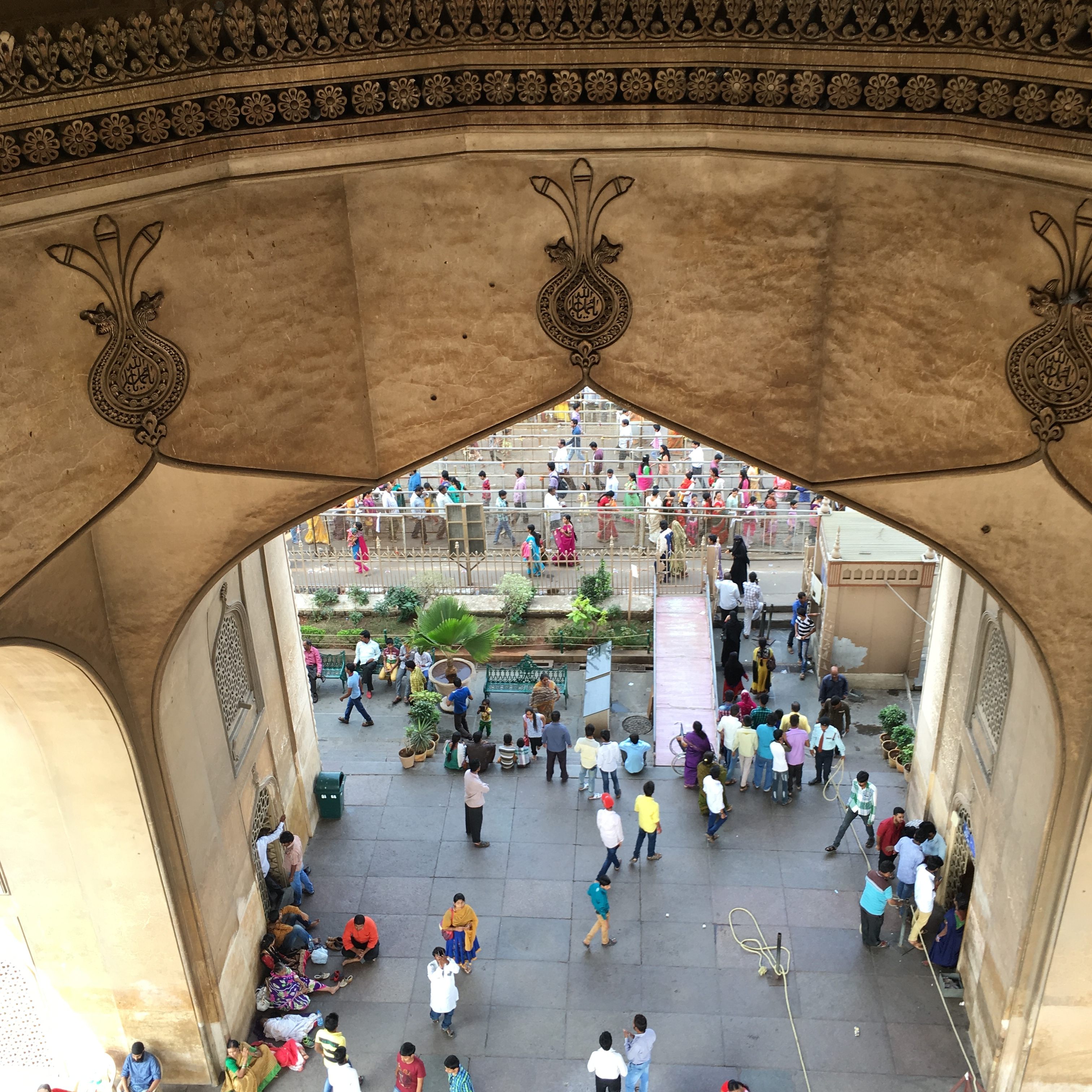
Looking into the center of the Charminar mosque in Old Hyderabad, India. Roughly 40 percent of Hyderabad is Muslim and 60 percent Hindu, compared with 15 percent Muslim and 85 percent for India, overall.
Sahasram Pandey, a Hindu priest inside the temple, has sat at the temple for 11 years and was there, as well, cutting up flowers. He generally agreed with the security guard’s account that the Temple has been there for hundreds of years in some form and added a twist—Pandey’s version of the origin story involved a woman refusing to leave the spot. A statue of an idol stood nearby and when asked where it came from and when, Pandey shrugged. “It’s just always been there.”
That differed from the story Mohammed Zaheer Uddin, a storekeeper across from Charminar told. According to Uddin, the temple showed up sometime in the 1980s. “It was just a stone then,” he said. “There was a lady who used it as a deity. People used to stop for a blessing and they built a temple after. It’s pretty new.”
Nearby, another longtime Charminar neighbor, Mohammed Shaw Pasha cut melons with a machete and agreed. He disputed the photographs that had been published in local newspapers over the years—different from the photos that purported to show that it was built after the 1960s—that implied its history was far longer. “It’s pretty new,” he said.
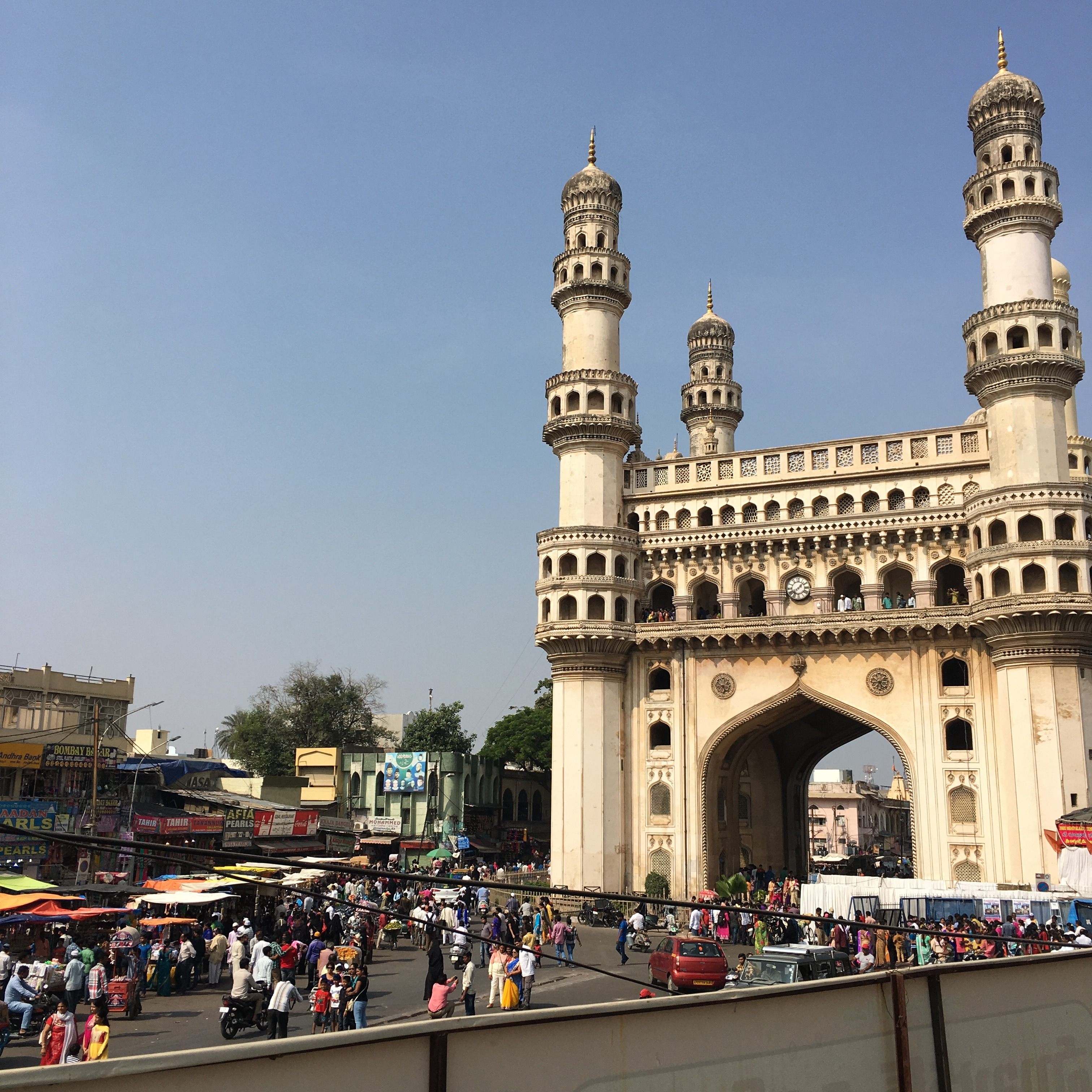
Charminar mosque is located in the heart of Hyderabad, India.
In the wake of the protests in 2012, Archeological Survey of India (ASI) weighed in. With a set of photos showing the temple didn’t exist in 1952, they categorized the structure as “unauthorized.”
And yet, against compelling photography, the debate goes on. A local politician tweeted that endowment records “clearly” prove that the temple has been around for 200 years. Another held that the temple used to be a statue, one that was damaged by a bus in 1979 but, still, sacred.
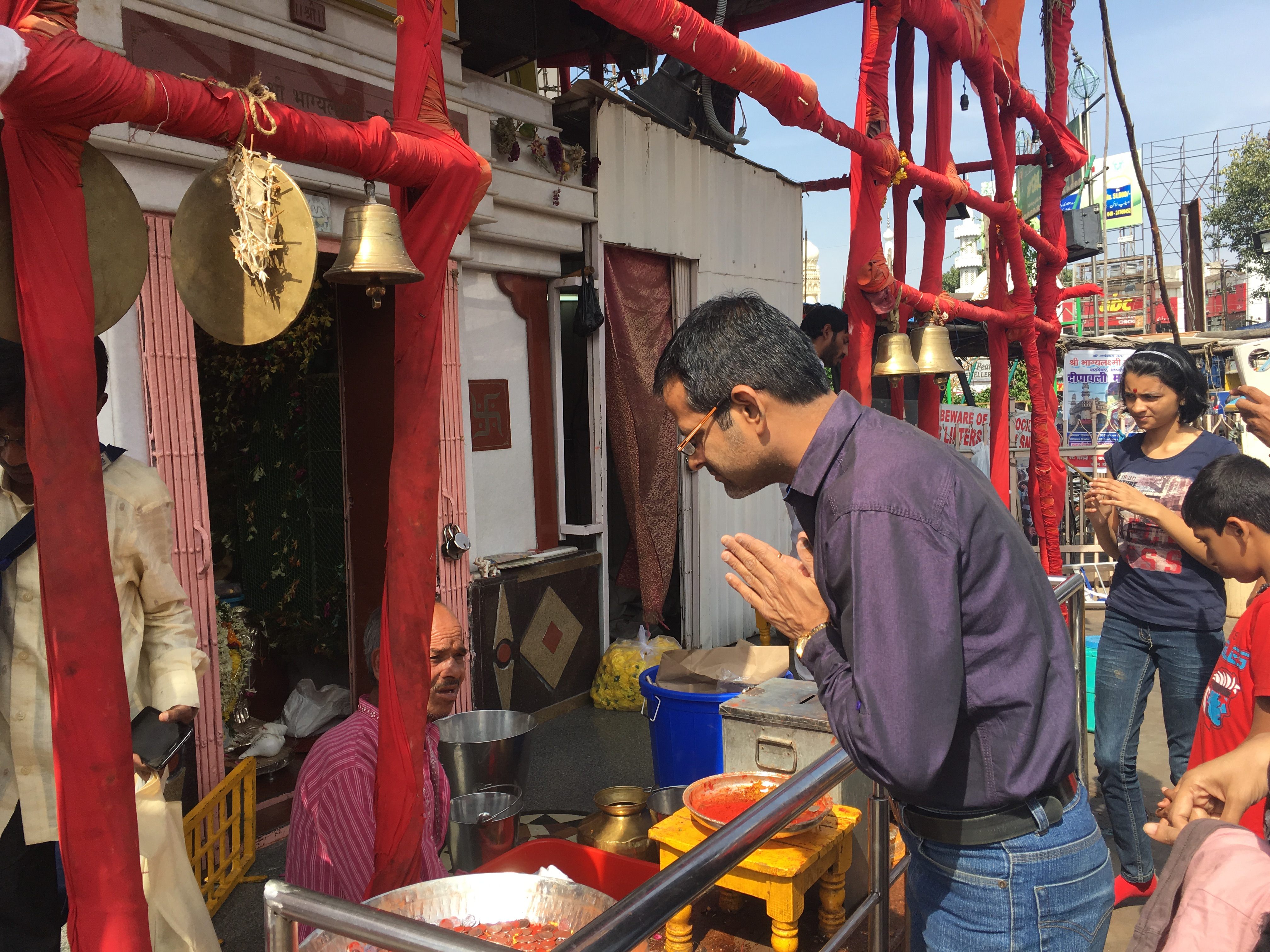
A man prays at Bhagyalakshmi Temple.
A few feet away from Bhagyalakshmi Temple, Sayed Mehraj Hussein, a Muslim priest, guided worshipers to their own altar at the foot of Charminar. Hussein said he had been at Charminar every day for all of his 50 years, he said, and before that, his father and grandfather were there, too.
Hussein said, too, that the temple stones were far more modern and he heard their original intent was to help keep cars from hitting the mosque’s walls. The smell of incense wafted through the air as he explained that in all of his years at the mosque, there have been minimal conflicts between the two groups of worshippers
“This is an ancient site,” Hussein said. “People ask how old it is. But it doesn’t affect their prayers.”




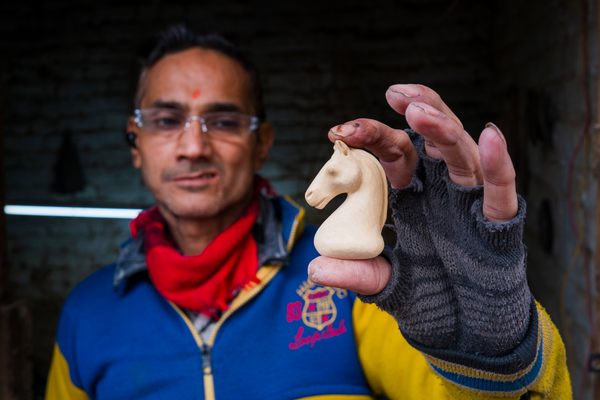

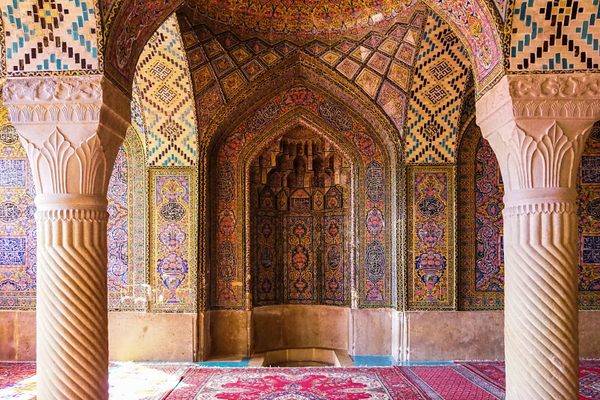

Follow us on Twitter to get the latest on the world's hidden wonders.
Like us on Facebook to get the latest on the world's hidden wonders.
Follow us on Twitter Like us on Facebook